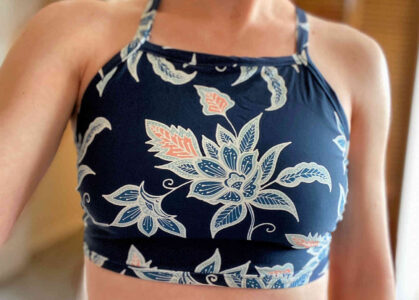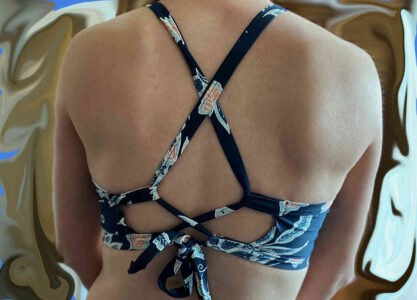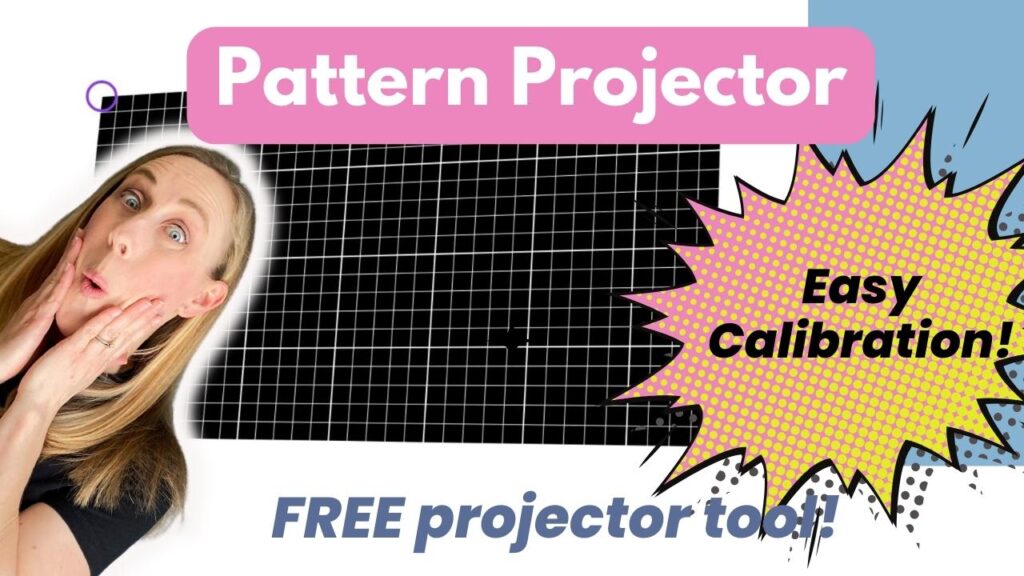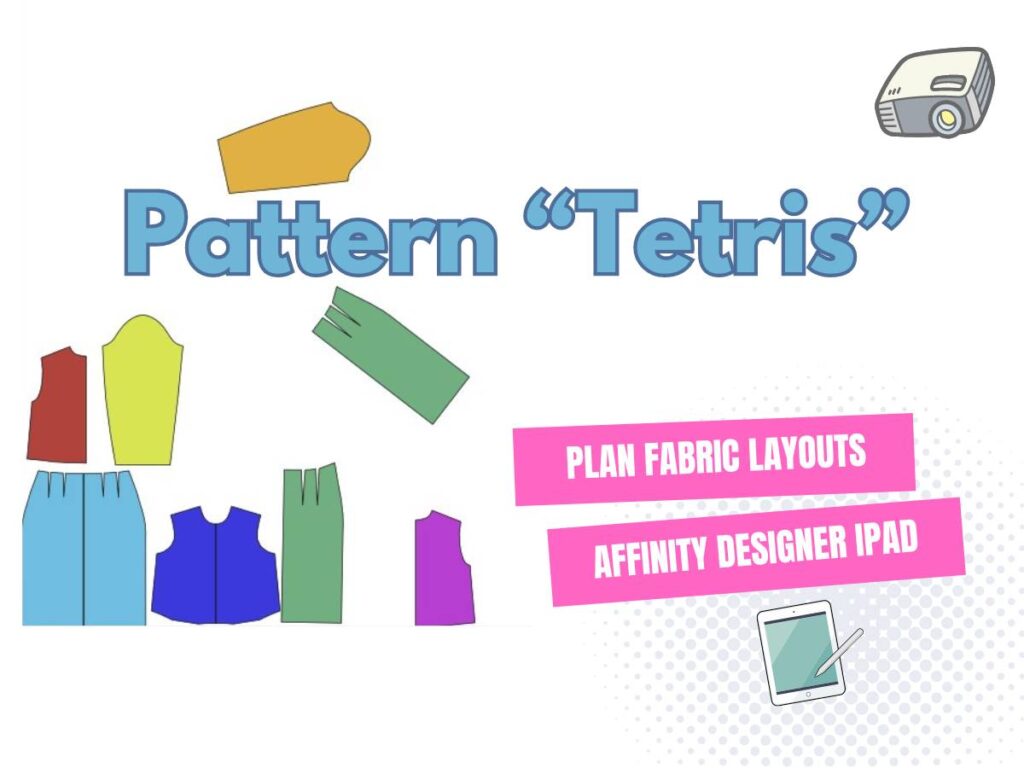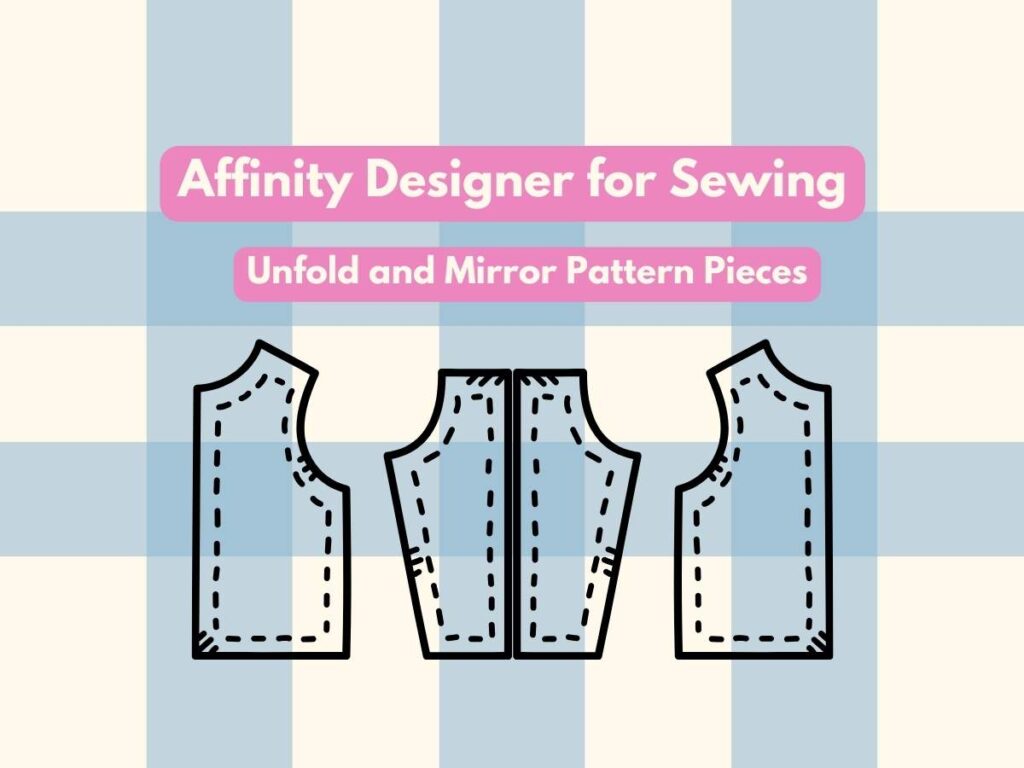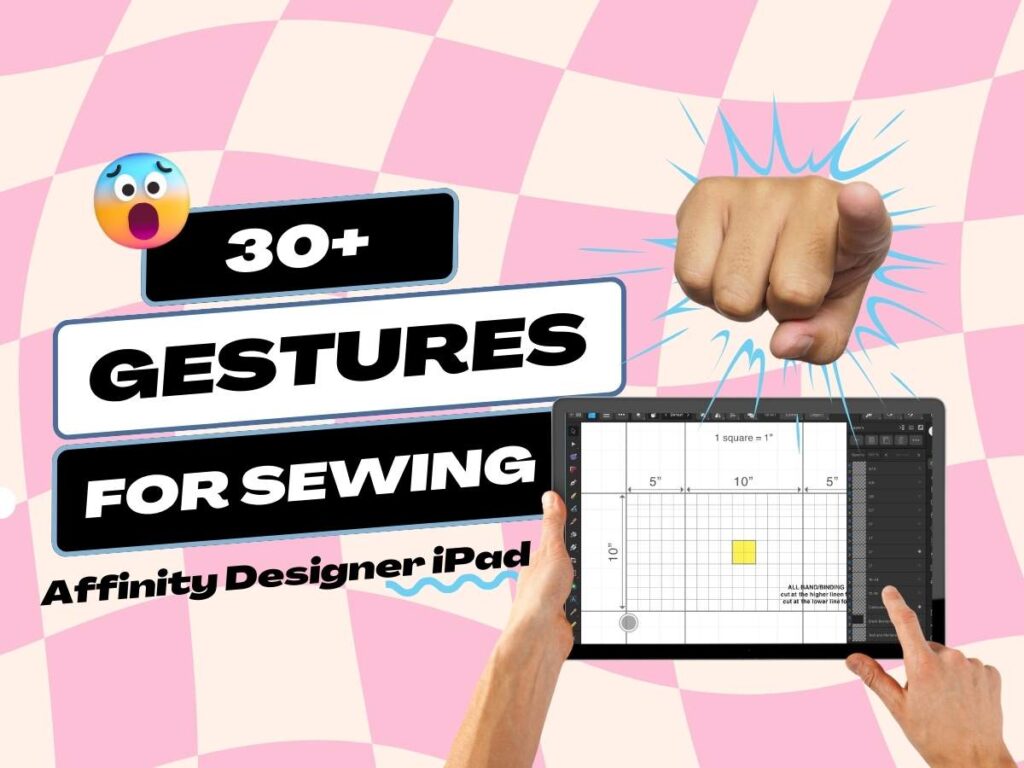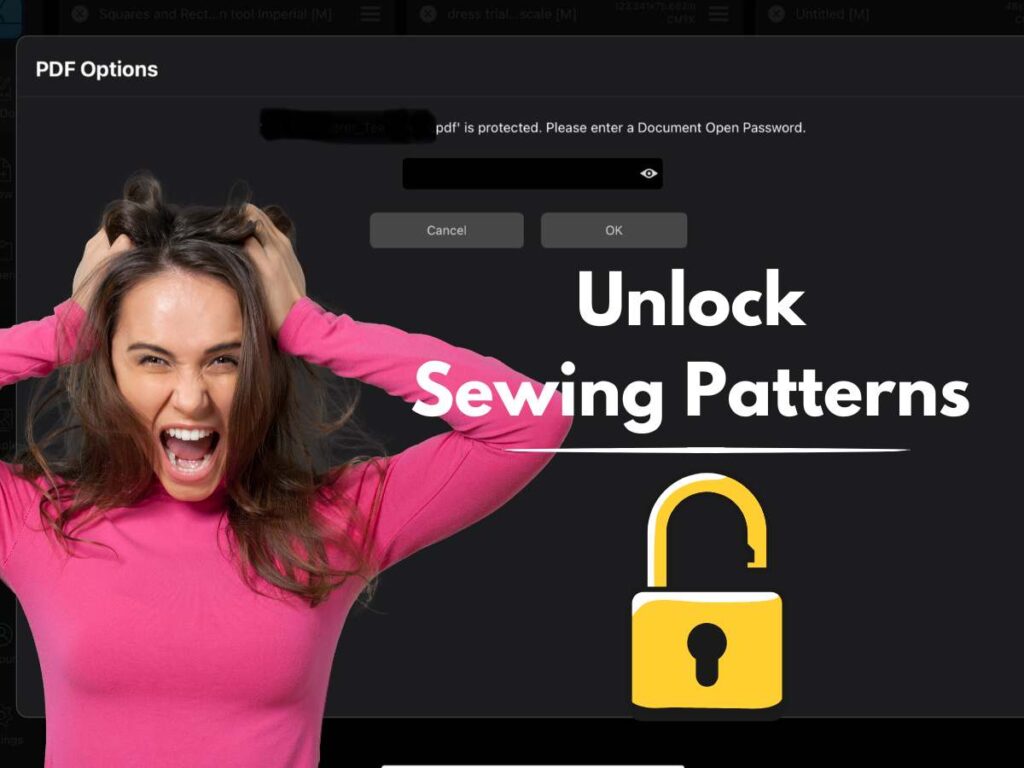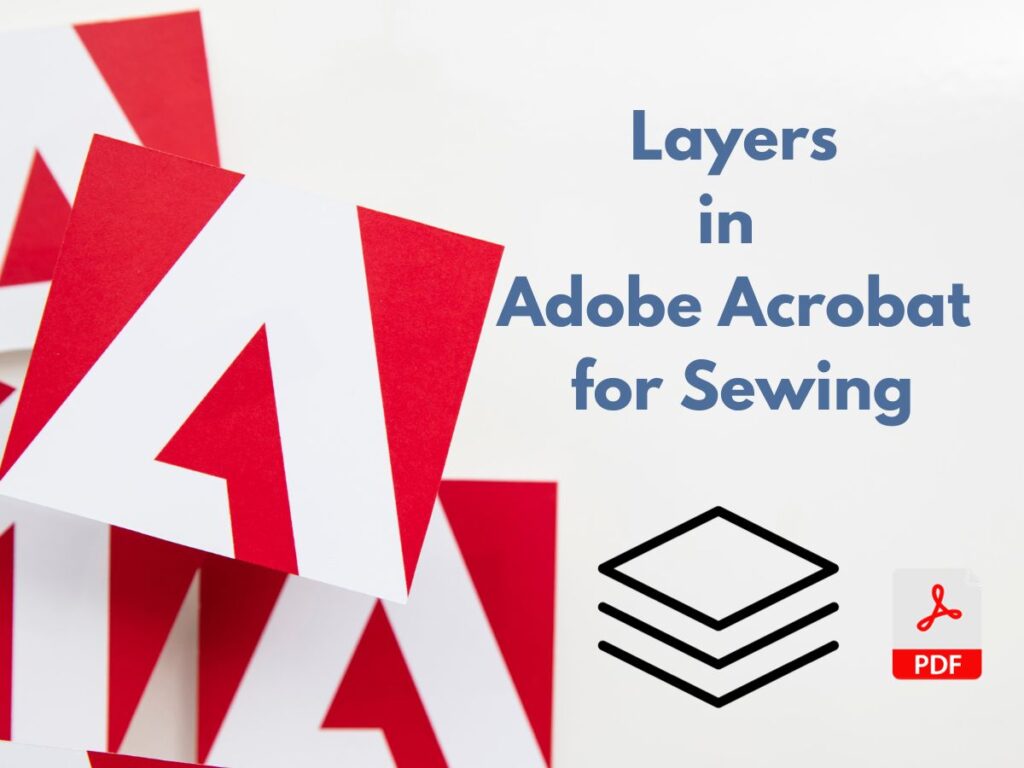Last updated on March 12th, 2024 at 02:34 pm
*This post may contain affiliate links and we may earn a small commission if you click on them.
Do you want to be able to unfold pattern pieces on an A0 or projector file? Unfolding pattern pieces for projector sewing is easier than ever with the FREE Inkscape program.
When pattern companies were first converting pattern files for projector-friendly files, many left pattern pieces as “cut on the fold”. Some prefer to cut on the fold, while others prefer everything to be unfolded. Pattern designers are starting to “unfold” pattern pieces with a “fold line” left for those wishing to still cut on the fold.
However, if you want to use a pattern that only has cut on the fold, you can still “unfold” the pattern pieces pretty easily! Once you get the hang of it, you will be unfolding pieces in just a few clicks of a button!
Prerequisite: PDF Stitcher
If you haven’t used PDF stitcher before, I recommend going through my PDF Stitcher tutorial first before delving into Inkscape. It will make things a little bit easier for you!
Objective: You will be able to unfold pattern pieces in Inkscape™ and save a PDF for pattern projecting.
I’m dreaming of summer! It’s also getting close for swimsuits to start coming out! Therefore, I decided to do my tutorial using the Oasis Swimsuit from Ellie and Mac. I love the back strap detail on this one! If you are looking for an easy sew and adorable swimsuit, make sure to check this one out!
How to Download Inkscape
First, you will need to have Inkscape downloaded to your computer. Inkscape is a completely FREE program! It can be downloaded on Windows, Mac, and Linux. When downloading in Windows, you will need to know if you have a 64-bit or 32-bit system. You can find this by going to Settings>About>System Type. Download and install Inkscape using the onscreen directions.
Download Inkscape 1.1.2 | Inkscape
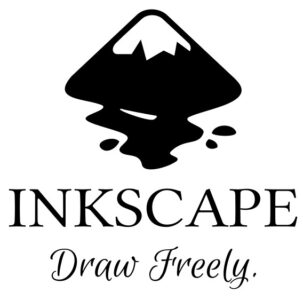
Step 1: Open pattern in Inkscape
Double click on the Inkscape icon on your desktop. When you first open up Inkscape you may see this “quick setup section”. I left everything in Inkscape default, but just know you can change the setup and keyboard options! If you use another keyboard default, then your shortcuts may be different than I show in this tutorial.
If you are a first time Inkscape user, I highly recommend my starter series on YouTube.
Inkscape for Sewing Pt. 1: Download and Open
Inkscape for Sewing Pt 2: Tour and Navigate the Workspace
Inkscape for Sewing Pt 3: Zoom, Rotate, and Calibrate Your Projector
Step 2: Setup in Inkscape
Before working, I like to set a few basics in Inkscape. Start with “Document Properties”. Go to File>Document Properties. A menu box will appear on the right side of the screen. I first change all of the units to inches. You can use centimeters too if that is what you prefer! I also change the units on the top of the document. The other tab in Document properties that you may want to be aware of is the “snap” tab. If you don’t like the way things are snapping (jumping into position), you can change the settings here. You can close the document tab, or use the three dots on the left of the tab to close it toward the right.
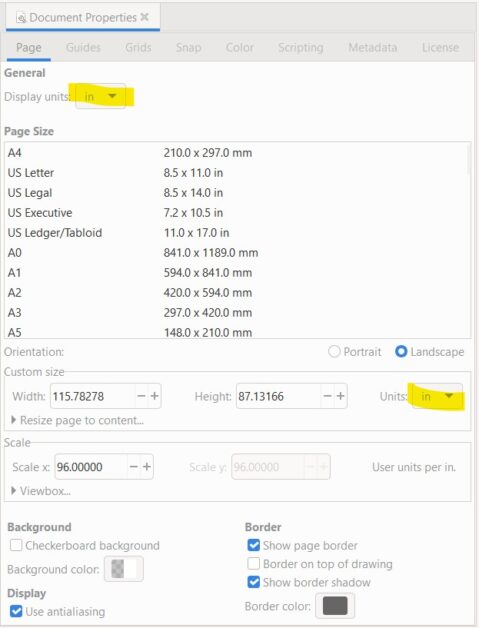
Step 3: Group and Ungroup
Zoom in on the pattern until you can see one of the pieces that needs to be unfolded. You can zoom by pressing the plus (+) button on your keyboard or go to View>Zoom. Use the sliders located on the bottom and right of the screen to center your pattern.
Now on to grouping and ungrouping! Every pattern is grouped differently, so you will need to do a little trial and error. Click your mouse on the pattern piece that needs to be unfolded. Does it select all the words, multiple pattern pieces, or more than just the line that needs to be unfolded?
If you answered yes, then you need to ungroup. Use your mouse to draw a box around the entire pattern piece. Then, ungroup by pressing Shift+Ctrl+G on your keyboard or going to the top menu Object>ungroup.
To group any pieces back together, click on the line that you want and while holding shift, click on the parts you want to group together. Then, press CTRL (or go Object>Group) to group or go to the top menu Object>group. Alternatively, you can click and drag your mouse to make a box around any objects that you want to group together. After you make the selection with your mouse, press CTRL to group the selection.
*See Inkscape unfolding video below!
Inkscape Video Tutorial: How to Unfold
Step 4: Duplicate and Flip
This is where the magic happens! Select the pattern piece that you want to be unfolded. You should be selecting just the pattern lines, not any of the instructions on the piece. If it is, try ungrouping again.
To duplicate, select Edit>Duplicate or use the shortcut CTRL+D. It may appear that nothing happened, but if you click on the pattern piece and move it, there should be two identical pattern pieces.
Use Edit>Undo or Ctrl + Z at any time to undo an action.
Now you have a duplicated piece, go to Object>Flip Horizontally or use the shortcut H. Some patterns will need to be flip vertically instead of horizontally. Go to Object>Flip Vertically or use the shortcut V.
The pattern piece flips. Move the pattern piece so the fold line lines up with the original pattern piece. The fold lines should be on top of each other.
Repeat this step until all the pieces are unfolded that you want.
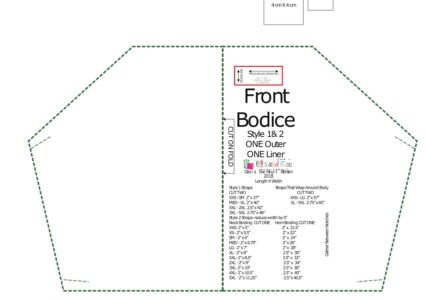
Step 6: Mirror Pieces
If your pattern called for cutting mirrored pieces, you can create a pattern piece for them. This will make it so you don’t need to flip the fabric or cut with two layers. Follow steps 4 and 5, except you do not need to line up any lines.
Step 7: Clean up and Line up
This is also a good time to clean up any marks on the pattern that you don’t need. Just make a box selection with you mouse and delete.
You can also organize your cuts by grouping the pattern pieces and moving them around in the workspace. Make sure to keep grainlines all going in the same direction!
*Make sure to save your work periodically! Go to File>Save As to save a new file, then you can use CTRL+S to save work. Save early and save often!
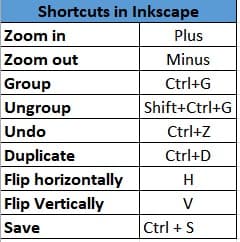
Step 8: Save PDF or Project in Inkscape
The final step is to save the new pattern file with all the modifications you have made. Always double check that everything is how you want it.
You can project directly from Inkscape or save as a PDF to open in another PDF reader. Your calibration zoom is specific to the each program. Don’t worry the scale will be the same for every PDF as long as you didn’t resize any of the pattern pieces while you were working!
Go to File>Save As or use the shortcut Shift +CTRL. A dialogue box will appear where you can name your file. Make sure to put PDF (portable document file) in the Save As Type.
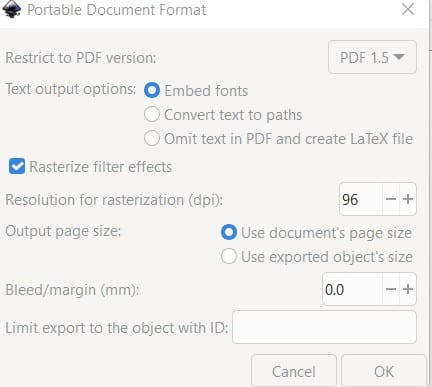
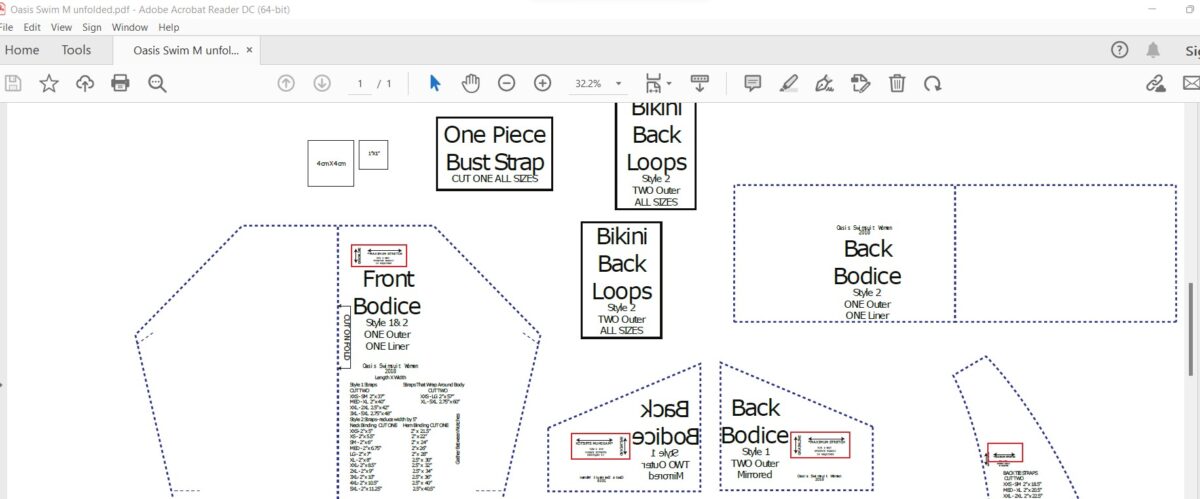
Happy Unfolding in Inkscape!
Inkscape Tips
Inkscape is a free program and still being debug and adjusted. Therefore, it can still have some performance issues. Here are some tips and tricks to reduce the frequency of issues and crashes.
The biggest thing that causes issues in Inkscape is large files. The Inkscape website has a lot of ways to limit performance issues. For sewing purposes, these are things to avoid:
-Don’t use the Objects dialogue box, found in Object>Objects. The dialogue box is the box that opens on the right side of the screen.
-Don’t use “extreme” zooming.
-Working with a lot of “nodes”.
-Only have one Inkscape window open at a time.
Now you are opening a world of possibilities with Inkscape and digital pattern editing! If you found this tutorial helpful, make sure to share with a friend!
Happy Sewing!

